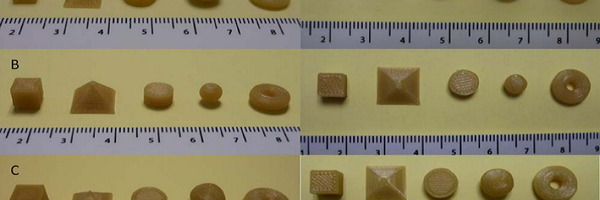Affordable 3D Printed Medicine
Grade 8
Presentation
No video provided
Problem
Not enough specified medicine. Not enough medication so that everyone can start using 3D-printed medicine. Shortage of organ donors.
Method
Bioprinting is where biomaterials and bioinks are mixed with cells get 3D printed into human-like flesh and make living tissues. To load in what to print you need a SD card and insert it into the printer with the filament or just send the print off of a computer. The printer goes layer by layer spreading the filament until the print is completed. The method is to simply compile research and give instructions on the subject of bioprinting
Research
We researched the effects of bioprinting on the person having an organ replaced, and also what bioprinting is, the pros and cons of bioprinting, and other subjects similar to that
Data
PROS of 3D Bio-Printing
- Every year about 105,000 people wait for organ transplants, and about 17 people die every day
- printing an organ from the patient's cells reduces and often completely negates the likelihood of the new organ being rejected, and 3d printing a new organ takes away the need for medications to reduce the chances of organ rejection
- The filament used for the 3d printed organ is called bioink and prints cells into specific shapes. In this case, organs.
- It is easy to mimic the real structure of the tissues
- 3d printed organs/tissues can give accurate responses to drugs without the need for human
victimsubject - There is no need for the animal
victimtest subject
CONS of 3D Bio-Printing
- VERY EXPENSIVE!!!
- Very complex
- The call environment can be hard to maintain fully
- Energy consumption
- It releases harmful chemicals
The types of filament that food-safe 3D printers use are PLA, PET, PET-G, and ABS etc.
Conclusion
In conclusion, we have deducted from our research that while many scientists are making headway in this field of research, we as a human race are still far from perfecting this particular field, however, we believe that soon, scientists will have access to any organ from simply tapping a screen and letting the printer do all the rest of the work.
Citations
3D printing: The future of organ transplants - Transplants
Customising 3D printed pills as a treatment for patients - Differences
How to 3D print the 'wonder pill' | The Royal Society - Different types of medication and explanation
Developing 3D Printed Drugs for Personalized Medicine with FabRx | 3D Interviews | 3Dnatives - More info
The Essential Guide to Food Safe 3D Printing | Formlabs - Types of Medical Filament
What is 3D bioprinting? - Background information about bioprinting
More 3D bioprinting info - More background information about bioprinting
Acknowledgement
I acknowledge this aknowledgement

